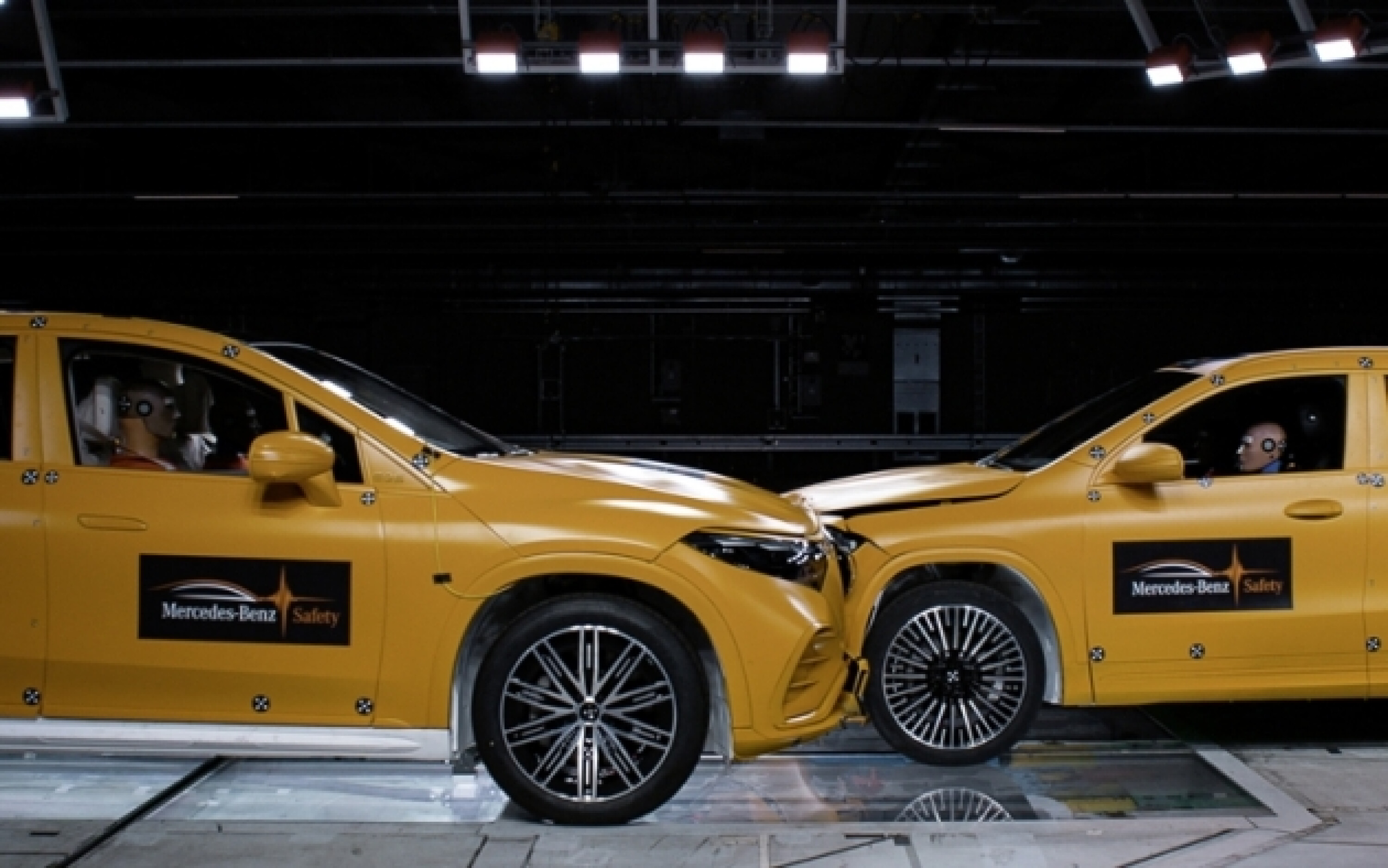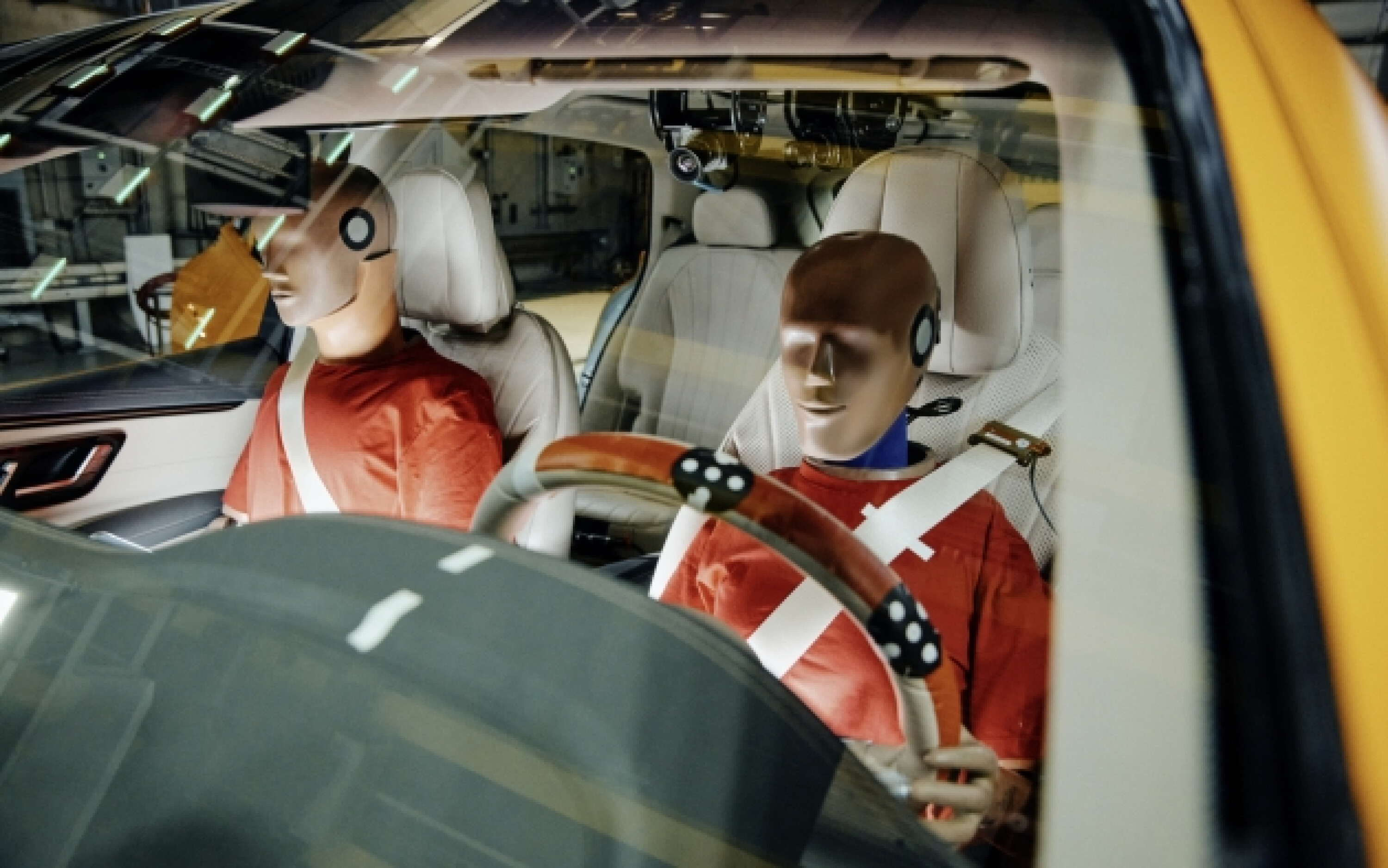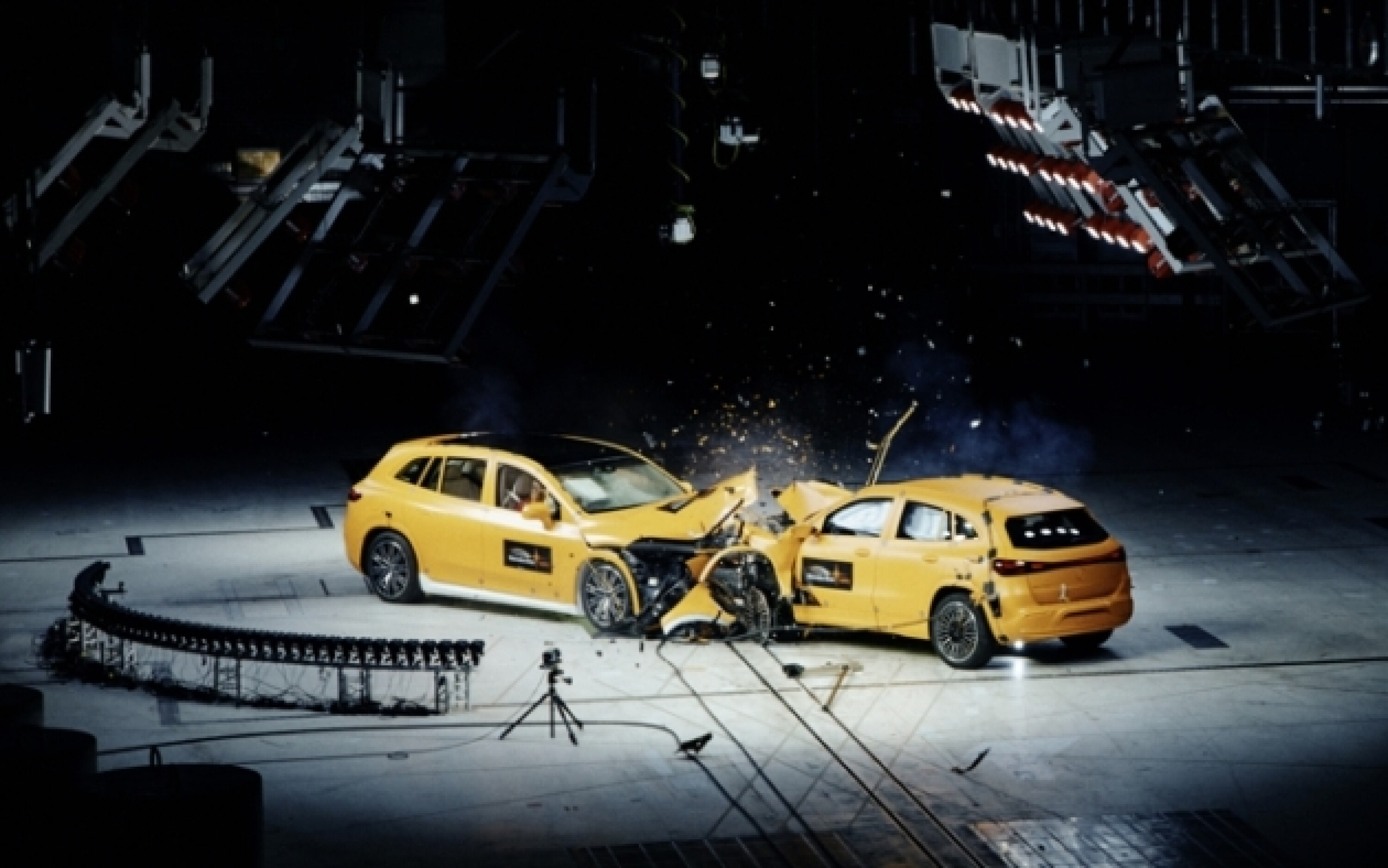
In a landscape where electric vehicles (EVs) are surging in popularity, safety concerns haven’t exactly taken a backseat.
From high-profile cases of battery fires to questions around how well these new-age cars can protect their occupants in a crash, there’s a general air of uncertainty.
An EV battery fire at Sydney airport in September saw multiple nearby vehicles burned. The fire was described as an “unusual incident”, however, with the already damaged battery having been removed from the vehicle and “stored in the lot” for some time, exposed to the elements.
As Rivian founder RJ Scaringe told the audience at the recent Code Conference in America [↗], EV fires are proportionately less common than with combustion vehicles – but their position as a polarising new technology means they make headlines when fires do happen, and dealing with a battery fire is far more complex for emergency responders.
Against this backdrop, Mercedes-Benz has orchestrated a public crash test with two of its electric models, intended to demonstrate that when it comes to safety, its EVs are designed to meet the same rigorous standards as their petrol-fuelled counterparts.
The German automaker claims to go “above and beyond” legal requirements in its recent crash test between two electric vehicles.
More than just a marketing stunt?
Well, no, this is still a valuable marketing exercise for Mercedes – but it also helps in proving that EVs needn’t be seen as inherently more dangerous than combustion cars.
To achieve this, Mercedes-Benz has conducted a frontal offset crash test between two of its electric vehicles, the small EQA SUV and large EQS SUV. Both vehicles were travelling at 56 km/h, with a 50 percent overlap. This is a notable 6 km/h faster than the speed stipulated by legal requirements.

What the crash test revealed
Mercedes-Benz claims to surpass not only legal requirements but also those laid out by ratings industry group Euro NCAP.
The usual testing involves a 1400kg trolley with an aluminium honeycomb barrier replicating another vehicle’s front. Instead, Mercedes used actual vehicles for the crash, notably heavier than the trolley used in standard tests – around 2.2 tonnes for the EQA and 3 tonnes for the EQS.
According to the automaker, both the passenger cell and the high-voltage battery of the vehicles remained safely intact.
The doors could be opened, and the high-voltage systems switched off automatically on impact.
While the company indicates that these outcomes show the vehicles’ ability to absorb crash energy effectively, it’s important to remember that this is still within a controlled environment.
It’s also worth noting that this test was undertaken without any Euro NCAP representatives present to observe and validate the results.

Dummy readings
The EQA and EQS SUVs each carried two adult dummies among the four used, and Mercedes claims its preliminary analysis showed a low risk of serious to fatal injury.
This reflects well on the vehicle’s safety systems, but again it should be noted that these are internally validated results only.
The EQA and EQS both have five-star Euro NCAP ratings, however.




